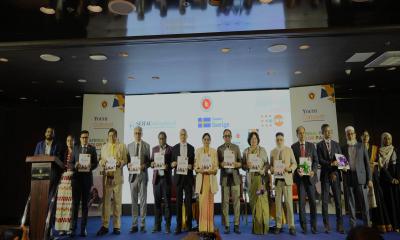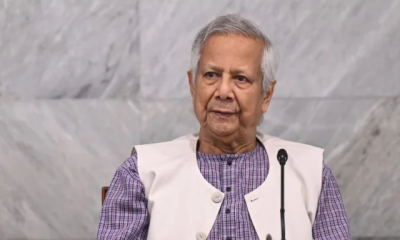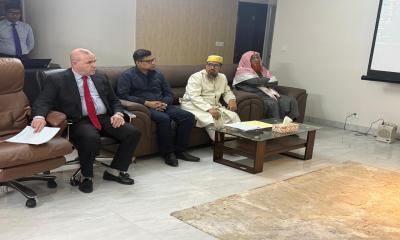In Bangladesh, the youth unemployment rate currently stands at 10.6%, more than twice the overall national unemployment rate of 4.2 percent, reports UNB citing the International Labour Organization (ILO).
Youth unemployment increased significantly during the COVID-19 Pandemic, the UN body said on Thursday. ILO is supporting the Government of Bangladesh in boosting employment for young people through skills training and industrial apprenticeships, as well as promoting entrepreneurship and skilled labour migration.
‘’Skilled youth is the key to Bangladesh’s future,” said Director for ILO Country Office, Bangladesh, Tuomo Poutiainen.
Poutiainen said ILO is proud to partner with the government of Bangladesh to build young people’s skills and employability.
Recovery in youth employment is still lagging, according to a new report by the IILO published on the eve of International Youth Day that falls on August 12 every year.
The report confirms that the COVID-19 pandemic has hurt young people more than any other age group.
The Global Employment Trends for Youth 2022 report finds that the pandemic has exacerbated the numerous labour market challenges facing those aged between 15 and 24 years, who have experienced a much higher percentage loss in employment than adults since early 2020.
The total global number of unemployed youths is estimated to reach 73 million in 2022, a slight improvement from 2021 (75 million) but still six million above the pre-pandemic level of 2019, the report says.
The share of youth not in employment, education or training (NEET) in 2020 – the latest year for which a global estimate is available – rose to 23.3 per cent, an increase of 1.5 percentage points from the previous year and a level not seen in at least 15 years.
This group of young people is at particular risk of seeing their labour market opportunities and outcomes deteriorate also over the longer-term as “scarring” effects take hold.
Young women are worse off than young men, exhibiting a much lower employment-to-population ratio (EPR).
In 2022, 27.4 per cent of young women globally are projected to be in employment, compared to 40.3 per cent of young men.
This means that young men are almost 1.5 times more likely than young women to be employed.
The gender gap, which has shown little sign of closing over the past two decades, is largest in lower-middle-income countries, at 17.3 percentage points, and smallest in high-income countries, at 2.3 percentage points.
Regional Differences
The recovery in youth unemployment is projected to diverge between low- and middle-income countries on the one hand and high-income countries on the other.
High‑income countries are the only ones expected to achieve youth unemployment rates close to those of 2019 by the end of 2022, while in the other country income groups, the rates are projected to remain more than 1 percentage point above their pre-crisis values, says the report.
In Europe and Central Asia (ECA) the unemployment rate of young people is projected to be 1.5 percentage points higher than the world average in 2022 – 16.4 per cent versus 14.9 per cent, respectively.
There has been substantial progress in reducing youth unemployment – for both women and men – but the actual and potential shocks of the war in Ukraine are highly likely to affect the results.
The unemployment rate of young people in the Asia and Pacific region is projected to reach 14.9 per cent in 2022, the same as the global average, although there are important divergences between subregions and countries.
In Latin American countries the youth unemployment rate is still worrying, projected at 20.5 per cent in 2022.
Historically, young women’s unemployment rates have been higher than young men’s, but the crisis exacerbated this trend.
The picture is radically different in North America, where the youth unemployment rate is projected to be below world average levels, at 8.3 per cent.
Young women and men are well placed to benefit from the expansion of green and blue (ocean resources and their sustainable use) economies.
According to the report, an additional 8.4 million jobs for young people could be created by 2030 through the implementation of green and blue policy measures.
Targeted investments in digital technologies could also absorb high numbers of young workers.
The report estimates that achieving universal broadband coverage by 2030 could lead to a net increase in employment of 24 million new jobs worldwide, of which 6.4 million would be taken by young people.
The report finds that undertaking the green, digital and care measures together as part of a big investment push would raise global gross domestic product (GDP) by 4.2 per cent and create an additional 139 million jobs for workers of all ages worldwide, of which 32 million would be accounted for by young people.
Decent work
Investment in these sectors must be accompanied by the promotion of decent working conditions for all young workers, the study says.
This includes ensuring that they enjoy fundamental rights and protections including freedom of association, the right to collective bargaining, equal pay for work of equal value, and freedom from violence and harassment at work.
“The COVID-19 crisis has revealed a number of shortcomings in the way the needs of young people are addressed, especially the more vulnerable such as first-time jobseekers, school dropouts, fresh graduates with little experience and those who remain inactive not by choice,” said Martha Newton, ILO Deputy Director-General for Policy.
“What young people need most is well‑functioning labour markets with decent job opportunities for those already participating in the labour market, along with quality education and training opportunities for those yet to enter it.”













-20251226062607.webp)
-20251226051932.jpeg)


















